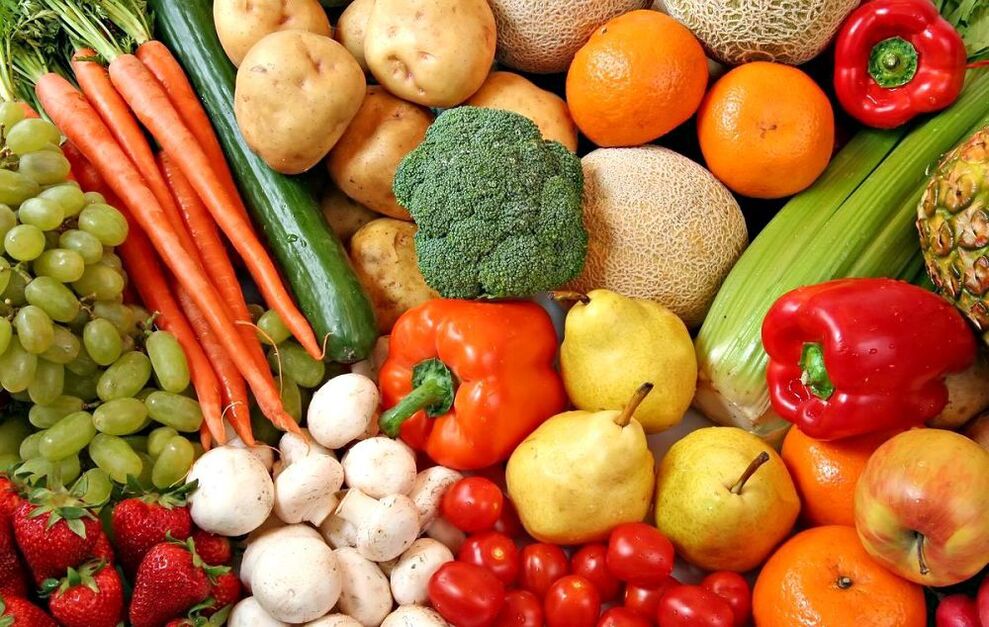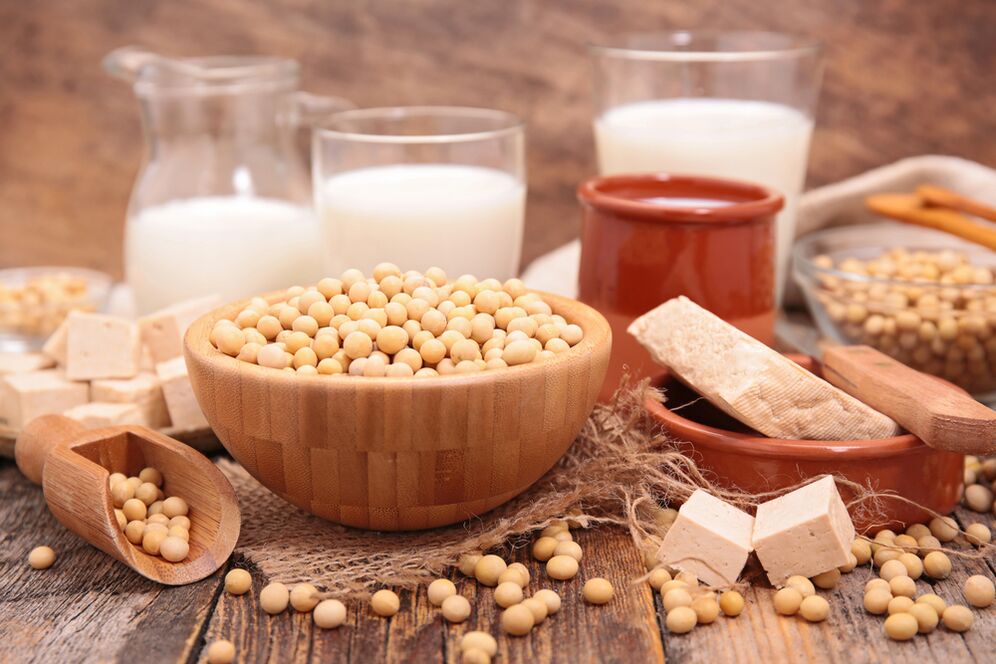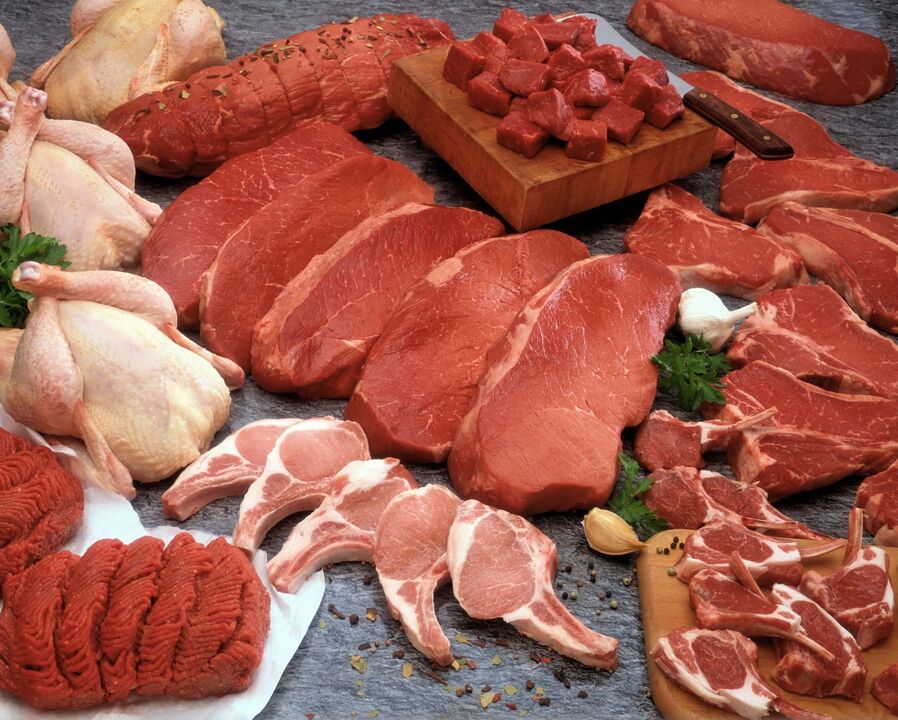The diet is based on the principles of naturopath James D’Adamo, who says blood type and human nutrition are closely linked. The blood group diet is based on the assumption that the composition of the blood has changed over the course of human evolution and is closely correlated with the food consumed by the vast majority of the population in a given period.
Although there is some logic to this claim, there is no evidence-based scientific basis for a separate diet per blood type. The table below gives some pictures of the suitability of food products for people of different blood groups.
| Blood type | I (SHE) |
II (THE) |
III (V) |
IV (AB) |
| Featured Product | Dietary red meat (lamb / beef), cod, pike red fish, olive oil, figs, beets, walnuts, pumpkin seeds. | Seafood, legumes, soy, rice, vegetable oils, buckwheat, artichokes, soy products, pineapple, Jerusalem artichokes, vegetables. | Olive oil, lamb, goat cheese, rabbit meat, oatmeal, flounder, mackerel, cod, rice, parsley, white cabbage. | Wheat bread, dairy products, turkey, lamb, mackerel, oatmeal, cod, corn oil, blueberries, green spices, pineapple. |
| Limited products | Fatty meats, cheeses, dairy products, cottage cheese, pasta and flour products, potatoes, corn / peanut butter, strawberries, tangerines, olives, melons, oranges, avocados. | Wheat bread, ketchup, mayonnaise, potatoes, apricots, blueberries. It is advisable to exclude meat and various meat products from the diet. | Rye bread, beef, pork, chicken, goose, shrimp, anchovies, heart, lobster, eel, corn, sunflower, peanut butter, buckwheat, tomatoes, persimmons, pomegranate. | Whole milk, beef, duck, bacon, pumpkin seeds, flounder, crab, olive oil, salmon, beans, buckwheat, bananas, radishes, pomegranates, avocados. |
| Weight gain foods | Legumes, wheat, corn, cabbage / cabbage. | Dairy products, beans, meat, wheat. | Buckwheat, corn, peanuts, lentils, sesame seeds. | Beans, corn, buckwheat, wheat, red meat. |
| Dieting foods | Seafood, red meat, liver. | Soy products, vegetables, pineapple, vegetable oils. | Red meat, low-fat dairy products, liver eggs, green vegetables. | Green vegetables, dairy products, seafood (excluding dried, canned, smoked and dried), soya products, pineapples. |
Diet for 1 blood type
The diet of positive blood group 1 is based on the fact that products containing mainly animal proteins should be included in the diet. People in this blood group should include low-fat red meat (beef / lamb), offal (heart, liver, lungs), turkey, sea / river fish (herring, sturgeon, trout). , halibut, perch, salmon, mackerel, cod, sardines, pike), excluding salted, smoked and marinated fish.
Products containing other animal proteins (dairy products, chicken eggs) are poorly digested, with the exception of cottage cheese, and can be consumed in very limited quantities. It is recommended to replace it with soy milk / tofut cheese, but soy products can be used as a supplement but not as a base.
The blood group 1 diet contains foods that contribute to weight loss - artichokes, Chinese cabbage, broccoli, spinach, Jerusalem artichokes, beet leaves, leeks, radishes, spinach, broccoli, parsley, garlic, horseradish, pumpkin, plums, figs. Fruit-neutral vegetables include mushrooms, zucchini, daikon, ginger, fennel, tomatoes, dill, quince, watermelon, pear, apricot, peach, cherry, gooseberry, grape.
Poorly digestible and undesirable for weight loss: eggplant, avocado, white / red cabbage, brussels sprouts and cauliflower, black olives, potatoes, tangerines, oranges, strawberries, strawberries, melons. Among the drinks, linden / rosehip tea, plum and pineapple juice are especially useful and speed up the metabolism. It is not recommended to drink chocolate, ice cream, strong coffee, cola, black tea.

Dietary recommendations for people in this blood type are given regardless of whether they have a positive or negative Rh factor. The diet of the first Rh-positive blood group is similar to that of the Rh-negative blood group. The following is a table that lists the recommended neutral and prohibited products for people in blood group 1.
Table of blood group 1 products
| Recommended | Neutral | Forbidden |
|
|
|
Diet according to blood group 2
The 2 positive blood type diets are based on plant-based foods and are close to a vegetarian diet. Meat products do not make sense in the diet of those with 2 positive / negative blood groups as they are poorly absorbed and promote fat accumulation. Sometimes you can eat skinless chicken or turkey that is neutral. The main sources of animal protein are seafood, fish and soy products (tofu cheese, milk).
Particularly useful: trout, carp, pike, perch, whitefish, cod, mackerel, sardines. The fish should be eaten with vegetables. Dairy products other than kefir are also undesirable in the diet. Chicken eggs in 1-2 quantities per week. Among the groats are useful: buckwheat, sprouted wheat grains, brown rice, bread made from sprouted wheat grains, but you can not abuse grain products - 2-3 times a week.

The menu for the second positive blood type should be dominated by vegetables and fruits, both raw and cooked. It is especially recommended to include broccoli, garlic, pumpkin, chicory, green beans, spinach, onions, carrots, apricots, plums, grapefruit, blackberries, strawberries, lemons, cherries, pineapples, raspberries. It is believed that the best effect is obtained by eating fruit that grows in the region where you live. Various nuts (peanuts), seeds, green tea are extremely useful.
Products for the second blood group
| Recommended | Neutral | Forbidden |
|
|
|
Diet according to blood group 3
The diet for the 3 positive blood groups includes a fairly varied diet. People with 3 positive / negative blood groups are relatively "omnivorous" and can consume most meat and dairy products (except pork and chicken), lean fish, eggs, cereals (except wheat and buckwheat), mushrooms, legumes and almost all kinds of vegetables. fruits other than olives, corn, pumpkins, tomatoes.
Unwanted products include crustaceans and various molluscs, fish eggs, waterfowl eggs, sunflower oil, nuts and seeds, edible gelatin, legumes, cheese, ice cream. Equally important for weight loss is the balance between the use of different cereals.

The use of red / white dry wine is permitted. The nutrition of the third blood group, as evidenced by the opinions of those practicing such a diet, is complete and easily tolerated. The table below gives an overview of the diet of people with this blood type.
Products for blood group 3
| Recommended | Forbidden | Neutral |
|
|
|
Diet for group 4
The 4 positive blood groups in the diet are moderately mixed: meat (turkey, lamb, rabbit), fish (sea herring, sturgeon, tuna and sardines), seafood, lactic acid products, cheeses, chicken / quail eggs, olive oil, bean curd, soybeans, lentils andbeans, groundnuts, walnuts, cod liver, cereals (except buckwheat / maize), non-acidic vegetables separately and in salads (excluding peppers).
The diet of the 4 positive / negative blood groups includes a wide variety of cereals (oats, rice, rye, millet, buckwheat). And wheat can be present in a limited amount in a weight loss diet or can be omitted altogether. Of the vegetables in the diet of the other groups, undesirable tomatoes and potatoes are optimal, and radishes, artichokes, and bell peppers should be excluded. Among the fruits, plum grapes and most berries are suitable.
Products for blood group 4
| Recommended | Forbidden | Neutral |
|
|
|
Authorized products
Dietary intake by blood group includes:
- For persons with blood type 1 - meat in the form of beef / lamb, various offal (lungs, brain, liver, heart). The presence of sea / river fish (sole, halibut, pikeperch, sturgeon, mackerel, trout, herring, cod, sardines, pike) is mandatory in the diet. All breads that do not contain gluten are well digested - rice, soy and rye bread. From cereals - buckwheat, rice, barley. Among the vegetables in the diet should be: Chinese cabbage, artichokes, beet leaves, parsley, broccoli, Jerusalem artichokes, spinach, leeks, garlic, pumpkin, radish, horseradish; from fruits - plums, figs, pineapple juice, plums, which promote metabolism. Smaller quantities are allowed: grape and apricot juice, blueberry juice, grapefruit juice. The recommended vegetable fat is olive / flaxseed oil. Green tea, seaweed, beer, hawthorn / chamomile scalding, red / white wine are recommended.
- For blood type 2 - sea / river fish (mackerel, trout, cod, perch, carp, whitefish, sardines). Especially useful for all soy products - tofu cheese, milk. Most dairy products (goat’s milk, kefir, bulk cheese, yogurts, feta, mozzarella, ricotta cheeses). The presence of flaxseed / olive oil, asparagus beans, germinated grains, legumes and buckwheat in the diet is important. Among vegetables, it is important to include in the diet beet leaves, Jerusalem artichokes, kohlrabi, broccoli, artichokes, red onions, romaine lettuce, spinach, garlic, leeks, chicory, horseradish; from fruits - apricots, blueberries, pineapples, cherries, grapefruit, cranberries, figs, cranberries, lemons, plums. Recommended drinks are sour water with lemon juice, grapefruit juice, green tea, hawthorn / rosehip decoction, red wine.
- For persons of blood group 3 - meat (veal, chicken, rabbit, lamb, lamb, game), liver, milk, dairy products / fermented dairy products, eggs, soy products, cereals - rice, oats, millet, millet. The presence of fish (perch, halibut, salmon, pike, cod, mackerel, hake, sardines), vegetables (red peppers, carrots, cabbage, eggplant, parsley) in the diet is mandatory. Herbal teas, grape juice, pineapple juice, cranberry juice, cabbage juice, dry red / white wines are useful and are recommended to be consumed in small amounts after a meal.
- For blood type 4 - meat (lamb, turkey, rabbit), fish (hake, mackerel, pike, salmon, sardines, cod, perch), cod liver, lactic acid, cheese, olive oil, bean curd, walnuts and peanuts, various cereals (rice, oatmeal), rye and soy bread. Vegetables in the diet include eggplant, cauliflower, cucumber, parsley, broccoli, horseradish, garlic, beans, celery. Useful fruits such as cherries, lemons, pineapples, grapefruit and grape juice, kiwi, plums. Recommended drinks include green tea, chamomile, hawthorn and mint tea.
Products wholly or partly restricted
Individuals' diets by blood group exclude the following foods:
- For those with the first blood type - pork and goose. It is not recommended to eat smoked fish, any caviar, large amounts of butter, chicken eggs and dairy products. The use of cottage cheese, dairy products, bulk cheeses, whey, whole / diluted cow's milk is prohibited. Excluded from the diet: white bread, cereals from wheat, corn and oatmeal, cottonseed, peanuts, corn, vegetable oil, ketchup, pickles. Undesirable vegetables: eggplant, cabbage, mushrooms, potatoes, black olives.
- For people with blood type 2 - certain fish species (flounder, anchovies, herring, halibut, beluga), caviar, smoked salmon, seafood (squid, octopus, crabs, lobster, shrimp), crabs, oysters. It is not recommended to use butter, whole / skim milk, cream and hard cheeses, ice cream, smoothies, white bread, kefir, yoghurt, bulk cheese, goat's milk, pastries, cereals. Among the fats, cottonseed, corn, peanuts, sesame oil, margarine, butter, solid animal fats should be excluded from the diet. It is not recommended to eat certain types of vegetables and fruits, as well as tomatoes / orange juice, vodka cocktails, beer, coca-cola, soft drinks, black tea.
- For blood type 3 - pork, chicken, goose, caviar, legumes, buckwheat and wheat, legumes, crabs, hard cheese, pumpkin seeds. Excluded from vegetables: radishes, tomatoes, radishes. Sunflower oil, white / black pepper, ice cream, persimmons and pomegranates, spirits are prohibited.
- For blood type 4 - pork, goose, veal, ham / bacon, butter, seafood. Inedible sunflower oil, apple cider vinegar, corn, buckwheat, wheat, sunflower seeds. Prohibited from vegetables / fruits: radishes, radishes, peppers, oranges, mangoes.
Menu (Power mode)
The menu includes a list of foods recommended for people with different blood types. The diet has no restrictions on the usual ways of culinary processing of the products.
Pros and cons
| profik | Cons |
|
|
Blood type diet reviews and results
Nutrition per blood type, as evidenced by the opinions of those practicing this diet, is the subject of much debate, both in terms of evidence for this theory and its practical application. It is therefore difficult to draw clear conclusions. Opinions on who used this diet differ: some have managed to shed the extra pounds, while others have not changed their weight.































































